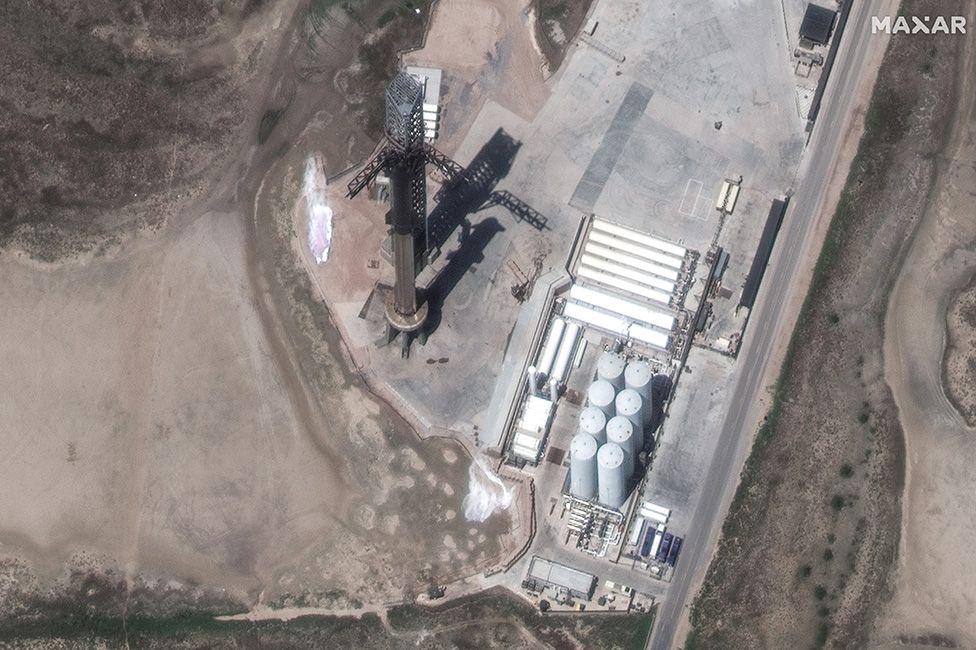The ultimate objective is to have both half of the vehicle conduct controlled landings so they may be refuelled and utilised repeatedly, even if both segments would end the day on the ocean floor.
Nobody knows how long it will take to develop this skill. Nonetheless, a successful effort would be transformative.
A bright future should be possible given the potential payload performance to orbit of more than 100 tonnes per trip and the low cost of operation, which is primarily only the cost of fuel.
“We’ve got an arduous two or three years ahead of us with, probably, you know, many bumps on the road, but at the end of that, we should have something that enables a base on the Moon and a base on Mars,” Mr Musk said this week.
Mr Musk has tried to set expectations low for the test flight, which will begin at Boca Chica, on the the US-Mexico border.
Just getting the vehicle off the ground and not destroying the launch pad infrastructure would be considered “a win”, he said.
SpaceX will again open a live stream on its website about 45 minutes before lift-off.
The top segment of Starship, also known as the ship, has taken flight previously on short hops, but this will be the first time it will launch with its lower-stage.
This immense booster, called simply Super Heavy, was fired while clamped to its launch mount in February. However, its cluster of engines on that occasion were throttled back to half their capability.

If, as promised, SpaceX goes for 90% thrust on Thursday, the stage should deliver something close to 70 meganewtons. This is equivalent to the force needed to propel almost 100 Concorde supersonic airliners at takeoff.
It’s also double the thrust achieved by the Saturn V rocket that famously sent men to the Moon in the 1960s and 70s.
The mission would see the integrated Starship rocket fly out over the Gulf of Mexico.
The aim is to despatch the ship on a near-orbital trajectory that concludes with it splashing down in the Pacific, a couple of hundred km north of Hawaii.
Super Heavy, which powers the first two minutes and 50 seconds of flight, will try to return close to the Texas coast once its lifting job is done.
It will be commanded to make a vertical hover just above the Gulf’s waters, before being allowed to topple over and sink.
Although both segments will end the day on the seafloor, the ultimate goal is to have both halves of the vehicle perform controlled landings so they can be refuelled and reused, repeatedly.
How long it will take to achieve this capability is anyone’s guess. But if the project is successful, it would be transformative.
The prospective payload performance to orbit of more than 100 tonnes a flight, allied to the low cost of operation – principally, just the cost of fuel – should open the door to an exciting future.
“We’ve got an arduous two or three years ahead of us with, probably, you know, many bumps on the road, but at the end of that, we should have something that enables a base on the Moon and a base on Mars,” Mr Musk said this week.

